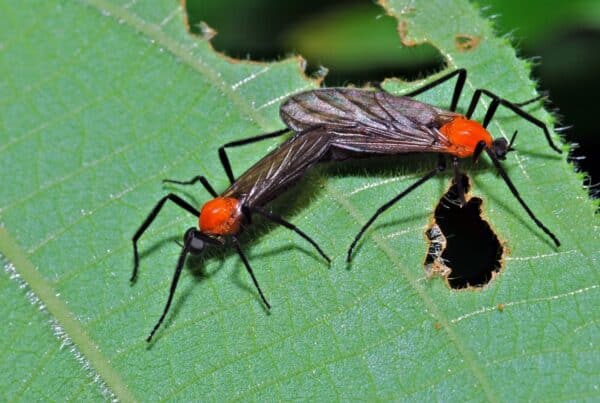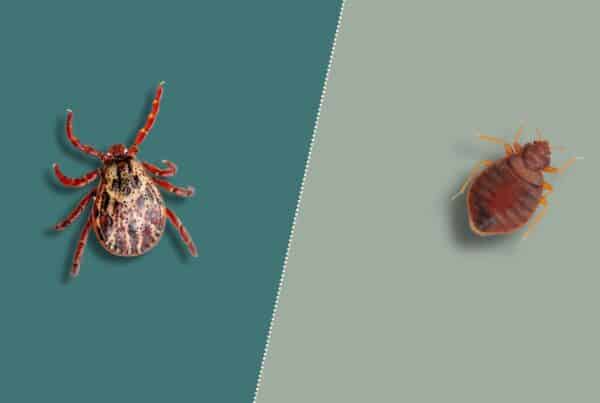Spotting a stray ant meandering across your kitchen counter may not be immediately alarming, but if it happens to be a carpenter ant, it’s worth addressing. These insects can turn your home’s wooden structures into a maze of destruction if ignored for too long. Knowing the signs to find a carpenter ant nest can help stop the damage in its tracks.
This article is your tactical guide to identifying and locating carpenter ant nests. From there, we’ll break down the next best steps and weigh out when it’s wise to escalate the matter to pest control professionals.
Introducing the Carpenter Ant
Carpenter ants are crafty wood excavators, capable of causing significant structural damage over time. To tackle an infestation, it’s crucial to understand them and their habits.
Carpenter ants are drawn to wood – not to eat it, but to create galleries for their colonies. Unlike termites, they don’t consume the wood but carve it out to build their nests. Their preference for moist or decaying wood means they often start their colonies in areas with water damage or rot.
Identifying carpenter ants is the first step in addressing an infestation. They’re typically larger than other ants, up to half an inch, and are usually black. However, they can also range between red and brown. The presence of worker ants indoors often indicates a nest nearby, as they venture out to collect food.
Not all ants indoors are cause for concern, but carpenter ants are distinctly different. They leave behind a telltale sign known as ‘frass,’ which resembles fine sawdust, resulting from their nest construction activities. If you spot this, it’s a clear indication you need to find their nest. With this knowledge in mind, let’s move on to the specific signs that suggest a carpenter ant nest is around.

Signs of a Carpenter Ant Infestation
Recognizing the red flags of a carpenter ant infestation is key to halting their silent conquest of your home. These signs often emerge subtly but can escalate quickly, so vigilance is valuable. Here’s what to keep an eye out for.
Frass: The Sawdust Trail
The most conspicuous indicator of carpenter ants is the appearance of frass. This substance, which resembles sawdust or wood shavings, is the byproduct of their nest-building. You may find small piles of frass near baseboards, window sills, or in basements—anywhere wooden structures are accessible to the ants.
Sounds in the Walls
An often-overlooked sign is a faint rustling sound coming from inside the walls, especially at night when carpenter ants are most active. This sound is the result of the ants working tirelessly to expand their nests. If you hear this, it’s a strong hint that ants are nearby.
Trailing Ants Indoors
Spotting an ant or two isn’t unusual, but a consistent trail of them is a telltale sign of an established colony. Carpenter ants follow pheromone trails to food sources, which can often lead them into your home. Observing their movement can provide clues to the nest’s location.
Winged Ants Indoors
Another sign is the presence of winged ants, or swarmers, inside your home. These are the reproductive members of the colony, and their presence indoors typically means there’s a nest within the structure.
Locating the Nest
Attempting to find a carpenter ant nest can be a bit like detective work, but it’s possible – and critical in controlling the infestation. Start your search where you’ve found frass. These sawdust-like piles are ejected from the nests and can often be traced back to the entry points the ants use. Look closely for small holes in any wood structures, as these might be the gateways to their hidden galleries.
Since these ants are more active at night, you might need to do some nighttime investigation. Grab a flashlight and carefully observe the ants’ movements. Watch where they go as they may lead you directly to their nest. You might find them entering and exiting through tiny crevices in the walls or floors, which is a giveaway to where they’re hiding.
Don’t overlook areas with water damage. Carpenter ants have an affinity for damp and decaying wood, so any moist areas, such as around leaks or places that have had water damage in the past, should be thoroughly inspected. Check under sinks, around tubs, near window sills, or around door frames – anywhere that moisture may have compromised the wood’s integrity.
Listening can also be a useful tool in your arsenal. At night, when the house is quiet, press your ear against the walls or use a stethoscope to listen for any rustling or soft crunching sounds that could indicate the presence of ants at work.

When to Call a Professional
If you’re facing a carpenter ant infestation that seems extensive, persistent, and widespread, it’s time to call in a pest control professional. They have the means to tackle large-scale infestations and access nests that are deep within walls or in hard-to-reach areas.
Professionals are also the go-to solution if you’ve been battling a more significant problem that may not be resolved initially. Moreover, experts are skilled in identifying and recommending structural repairs to prevent future infestations, ensuring your home remains secure against these persistent invaders. They handle pesticides safely, mitigating health risks to you and your family, and can offer peace of mind that the infestation is being dealt with most effectively.
Lastly, if there’s a possibility that the integrity of your home’s structure has been compromised, professionals can evaluate the damage and advise on the next steps, possibly including consulting structural engineers. In these cases, professional intervention is not just helpful, it’s essential to maintain the safety and integrity of your property.
Other Recommended Maintenance
Maintaining your home to deter carpenter ants leads to even broader home care benefits. Ensuring your home is free from moisture is crucial. Periodically check for leaks and address them promptly. Replace any damp or damaged wood to prevent it from becoming a target for future infestations. Good ventilation in moisture-prone areas, like basements and attics, is essential to keep these spaces dry and unattractive to ants.
Keep the exterior of your home free from easy access points for pests by trimming back any vegetation that touches your house. Seal potential entry points, such as cracks and crevices, especially where utility pipes enter. Store wood piles and debris away from the home’s foundation to avoid creating inviting nesting spots for carpenter ants.
Gutter maintenance is critical; clean them regularly to prevent water from pooling around the foundation of your home. Lastly, don’t overlook the integrity of your roof! Quickly address any damage or wear that could lead to leaks.
Final Thoughts
In summary, staying vigilant for the telltale signs of carpenter ants could save you a lot of time and stress. If you find frass, hear rustling in the walls, or notice any other signs of a carpenter ant nest, it’s time to act.
Consistent home maintenance can deter carpenter ants before they start. Keep moisture at bay, seal up cracks, and maintain your property to make it less inviting to these industrious insects. For guidance in building your home’s pest defense plan, schedule online today with Inside and Out Pest Services in Jacksonville, FL, and surrounding areas.



